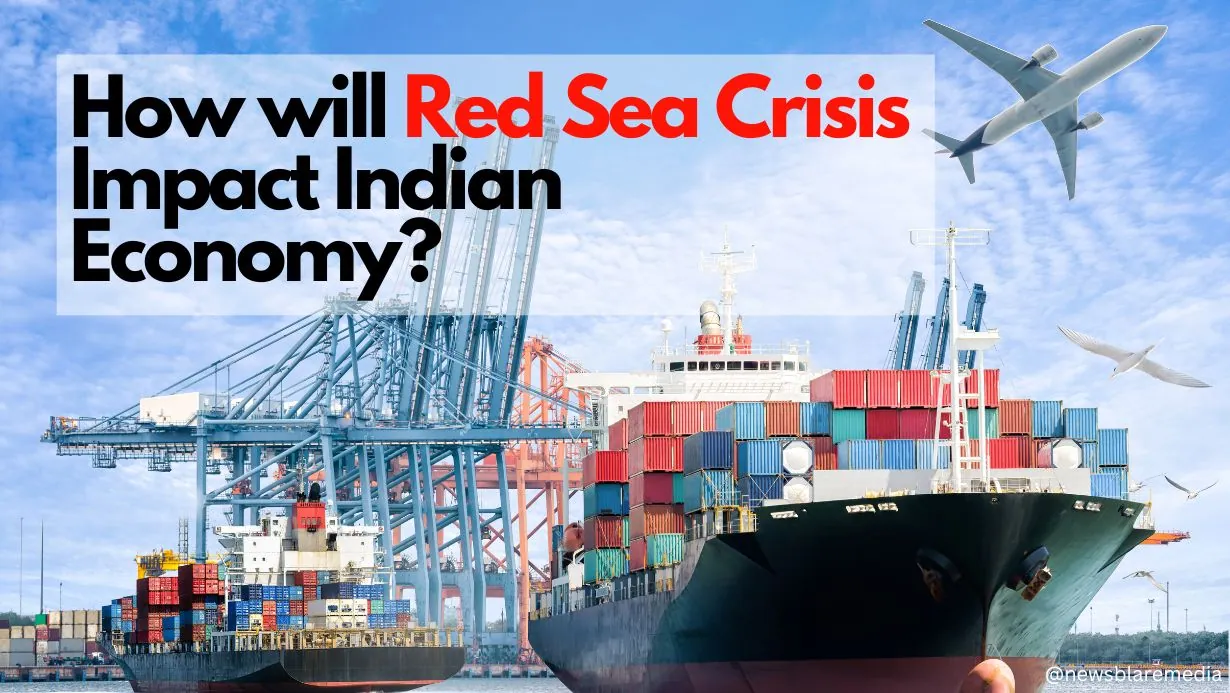With the range of events happening worldwide, one of the most talked-about events appear to be Red Sea crisis and how will Red Sea crisis impact Indian economy? While several analysts and experts have their own opinions and views, we believe our readers should know the Indian government’s views regarding this.
After all, what more authentic source can there be apart from Indian government? Right? Before knowing how will Red Sea crisis impact Indian economy, it is of utmost importance to know that these global events impact several sectors either directly or indirectly.
Recently, the government has highlighted that the country’s inflation and economic growth appear to be at risk due to increased oil prices mainly because of disruptions in Red Sea. Indian government also highlighted that diversification of trade routes has never been more important.
Red Sea shipping crisis impacted global trade and supply chains, mainly impacting routes through Suez Canal, that handles as much as ~30% of global container trade.
Since ships are now detouring around Africa’s Cape of Good Hope, the transit times have seen an increase of 30% and global container shipping capacity declined by ~9%.
Data suggests that ~80% of India’s merchandise trade with Europe – which also includes key products like crude oil, auto parts and chemicals- makes their way through Red Sea route. Currently, missile and drone attacks by Yemen’s Houthi militants prompted several shipping firms to re-route their respective vessels away from Suez Canal to around southern tip of Africa.
India was already struggling with increased inflation over the past few quarters and now this information from the government has questioned the country’s growth story. Retail inflation of Indian has just eased to ~5.09% in February, however, central bank continues to focus on lowering inflation to target of ~4%. Official GDP growth estimate for present fiscal year is now increased to 7.6% from 7.3%. This exhibits enduring strength of the overall Indian economy.
As per the India’s finance ministry’s monthly economic review, combination of increased freight costs, insurance premiums along with long transit times might make imported goods more expensive.
India’s shipments related to agricultural commodities, textiles, chemicals, capital goods, etc. might also be impacted because of disruptions, and can also impact price competitiveness of exports.
Economic review by the government quoted a United Nations Conference on Trade and Development (UNCTAD) report. Suez Canal saw a decline in transits by ~42% and ~49%, respectively in January 2024 in comparison to their peak levels.
Container ships which continue to route through Suez Canal have now opted to reroute. By 1H February 2024, container tonnage surpassing Canal declined 82%, and vessel tonnage crossing through Cape of Good Hope saw a rise of 60%.
While it is very difficult to assess that how will Red Sea crisis impact Indian economy, the recent data suggests that extra miles which have been travelled and days lost as a result of trade diversion translated in additional costs like fuel expenses. Container freight rates spiked by $500 in concluding week of Dec 2023.
Apart from these, other additional costs have been growing too such as security considerations, including risk of piracy, that generates increased insurance and legal claims. Global research companies expect that a sustained disruption in trade routes might impact capital goods sector. As the result, ripple effects can lead to an undesirable inventory build-up.
Red Sea crisis forced Asian refiners to reassess oil policies and come up with alternative plans to book stable feedstock flows, as per S&P Global Commodity Insights. How will Red Sea crisis impact Indian economy can be summed up in 3 ways.
First, any sort of escalation might create hurdles for Russian crude coming into Asia, prompting buyers to check for substitutes from other origins. Second, for products that are moving northbound from Asia to Europe, exporters continue to check developments before they take a loss. Lastly, longer routes might create incremental bunker demand in Asian countries.
Despite headwinds including hardening crude oil prices and global supply chain pressures, India’s economic growth story for upcoming fiscal FY25 – which will start from April 1, looks strong. This is expected to be supported by healthy growth and stable fundamentals.
India’s economic growth touched 6-quarter high in 3Q24, exceeding 8% for the 3rd consecutive time. Indian government’s effective capex should be ~4.6% of GDP in FY25, according to interim budget. This exhibits a significant 200 basis point rise from 2.6% of GDP in FY20.
